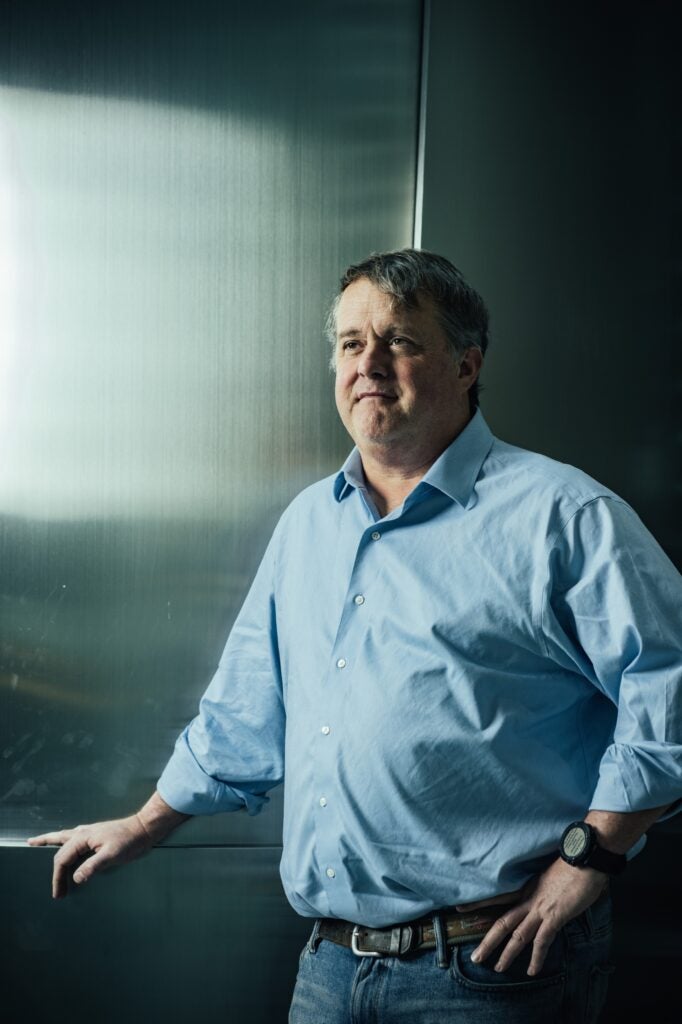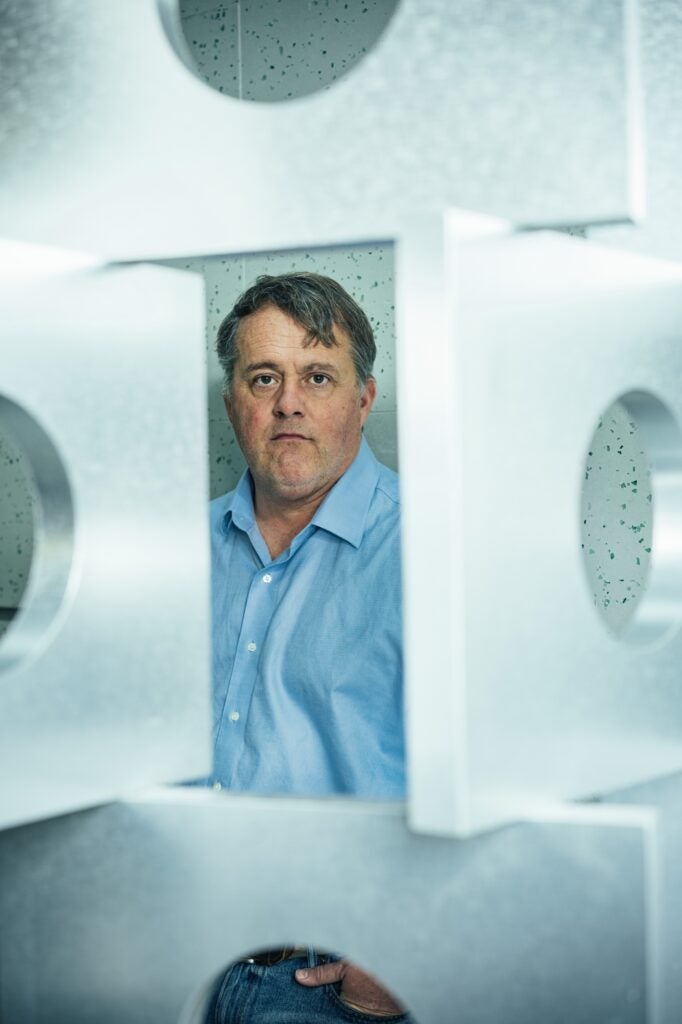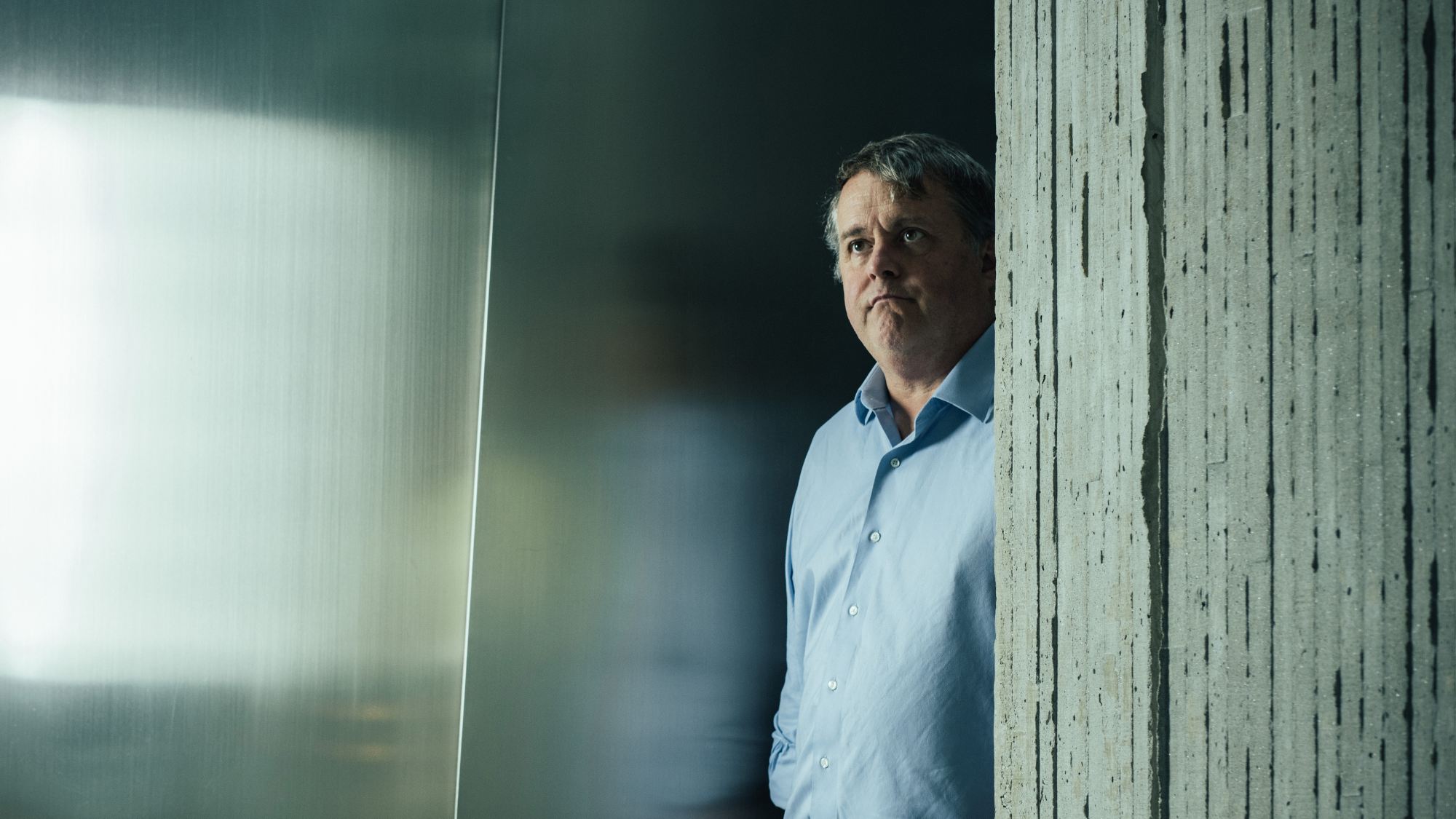In the Clear: World Bank’s Stephen Davenport (EMBA’06) on Why Transparency is Vital to Effective Governing
Stephen Davenport (EMBA’06) came to McDonough for his EMBA in 2004, he was mid-career, and he knew he was going to have to balance his economic development work with his studies. The school was aware his work would require travel, but just to be safe, Davenport had Ethiopian government officials fax over letters asking for him to be excused from class, as he was working, at that time, on their behalf. “It had the big Ethiopian star on it and everything,” says Davenport with a laugh. “It was a bit silly. And when they got it, they were like, ‘Steve, you don’t have to ask the government to send us a fax.’”

In his current role as global lead for anticorruption, openness, and transparency at the World Bank, Stephen Davenport focuses on the MENA (Middle East and North Africa) region. “We support countries financially as the World Bank, but also we provide technical assistance—which is know-how,” says Davenport.
Davenport’s career had started in IT, but he pivoted early on. “I didn’t want to just make money, so I looked around to see if I could get a job doing IT, but for the public good,” he says. The son of a preacher who spent some of his younger years with his father’s church in Guatemala and summers doing mission work in Haiti, his earlier career focused on the intersection of development and technology, creating software and programs that helped governments track their financial aid.
In his current role as global lead for anticorruption, openness, and transparency at the World Bank, where he has spent the last decade, Davenport currently focuses on the MENA (Middle East and North Africa) region. “We support countries financially as the World Bank, but we also provide technical assistance—which is know-how,” says Davenport. And those loans are both critical to growth and sizable: One of the loans Davenport is helping the Jordanian government manage is worth about a billion dollars. Another in Nigeria, is $1.5 billion.
When you’re handling amounts like that, Davenport says, you want to make sure it’s going to where it can be most effective. That can require the kind of transparency and accountability that is rare in many parts of the world, and often at odds with the prevailing culture. “That’s the challenge I face every day,” says Davenport. In this conversation, we talk to Davenport about how he approaches that challenge— and why both technology and local context are critical to helping a government work for its citizens.
How widespread is the problem of corruption? And how can you convince corrupt governments to change?
Corruption is everywhere. The United States has plenty of corruption. It’s just not as blatant as you’ll see in, say, Nigeria, where often it is seen as normal practice in governments and the private sector.
In some countries, it’s built in; people think it’s normal to pay a bribe. You almost have to convince our government counterparts that corruption is a bad thing, because they see it every day. Every time they go to a checkpoint, every time they go to school, every time they go to the hospital, they have to pay a little extra for some reason. That’s just the way the system works.
But the World Bank is not in the business of saying we’re not going to work with you because you have these challenges. We have to stick around for the long term across the various political cycles. Nigeria’s a great example: We could say, “You are too corrupt, we cannot provide support.” But then citizens will suffer, situations will get worse, and those situations will destabilize the country and perhaps the region.
So we have to be very sensitive about how we position anticorruption in our own work. One of the best ways to deal with it at the political level is to pressure certain governments by saying, for instance, that you’re ranked 100th out of 250 on corruption on a global index such as the one hosted by Transparency International. How do you improve your standing? And then get senior leadership to commit to certain goals. In most World Bank lending projects, often we don’t say “anticorruption” explicitly. We say, for instance, that we need to help them be more efficient at what they do. So, if you do these reforms, your hospitals are going to be more efficient, you’re going to get more resources, you’re going to serve patients better, and you’re going to get reelected. Essentially, making the case that it’s good for you to do these things.
The idea of transparency has guided a good portion of your career. What attracted you to that concept and that work?
I was drawn to it because there was such a gap. And then I started exchanging stories with all the transparency experts, and I realized that we share a common interest (laughs). I had something to offer: I was a techie, and they didn’t have many techies. They were talking about how transparency was a good thing, but they didn’t know, practically, what it meant, especially with the benefit of technology.
My primary area of interest was empowering developing countries to make informed decisions for their benefit, not to the benefit of particular bilateral donors. I had grown up helping communities in Haiti, and my father always drilled into me that communities know what they need. And you need to fund what they need, not fund what you think they need. So transparency was a way for the governments to tell donors what they need and for the donors to be transparent about what they’re going to fund.
How much of a challenge is a lack of technology to a developing economy’s transparency efforts?

“I had grown up helping communities in Haiti, and my father always drilled into me that communities know what they need. And you need to fund what they need, not fund what you think they need.”
There’s a maturity model at work there. Iraq, for instance, is in difficult times; they just need to get off of paper and into some type of electronic system. It’s very different from Estonia or Albania, where they have a million systems and they’re just trying to get them to work together.
Some of those countries are being transparent, but maybe none of the information is getting used. Your average person doesn’t go and read the budget, right? It’s a 200-page document. Trying to package information and creating channels for citizens to respond and engage is important.
Those responses and engagements are usually around service delivery, like wait times in the hospital or delays in school registration. That’s where it’s important to move from a foundational system like Iraq to a more advanced ecosystem where government is engaging citizens around how well they’re doing and what they need to improve.
I wrote a case study recently on Kaduna State in Nigeria. The government had about eight cars and 10–15 staff to monitor more than 2,000 public projects. They just did not have the manpower. So they made a mobile app and empowered citizens to report on the progress of projects. It showed that the government was listening, that they were being transparent, and that citizens had a serious role to play.
You mentioned your father’s mantra that communities know what they need. And you wrote a few years ago that “sustainable development goals are best achieved, not by a top-down approach, but by starting at the village level and initiatives can move upwards.” How do you effectively engage citizens in these efforts—especially the disenfranchised?
The best example of that is some of the participatory budgeting work that we did in Kenya. Participatory budgeting entails setting aside some money for communities to vote on their own projects. But how do you make sure that participatory budgeting exercises in communities are actually representing all of the people in that community? Because many communities have the same problem: They have a few loud people, they have the elders, they have gender issues in some countries— where women can’t vote and they don’t attend the meetings.
One of the approaches in participatory budgeting—which also is true for any kind of citizen participation—is you need to be multi-channel in your outreach and execution. Can you attend the public events virtually? Do you need to be in person? Are they in the local language? Are they inclusive? And when I say inclusive, you have to make sure statistically that you have gender, religious, age, and ethnic balance. And we try and use technology to ensure that.
For example, in Kenya, sometimes the county elite will not effectively notify citizens that they’re having a “participatory meeting,” to prevent certain voices from being heard. In Kenyan counties, for instance, only the people that voted for the governor would attend these meetings. Participation alone is not enough. You have to show, statistically, that you have a representative sample of the population. Because if you don’t, only the loudest voices will get the microphone, and that often leads to an unhappy set of stakeholders.
Another important aspect of this work is not to recreate existing channels of communication and decision making. Some of these communities have been around for thousands of years, so you want to make sure whatever you’re doing is connected to the community process that exists and use technology to enhance that.
In this work, it is critical to know where you are, and to understand the cultural issues of the country. These approaches don’t travel very well. If you try to take what you did in Kenya and apply it to Jordan, some aspects of it will work, but there are a lot of variables to consider from a cultural standpoint.
It’s really hard work that is always changing. I am always learning. This is part of the fun.
This story was originally featured in the Georgetown Business Spring 2023 Magazine.
